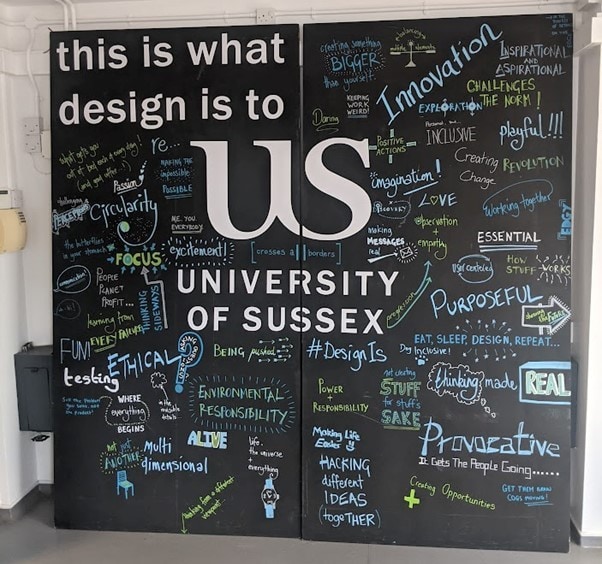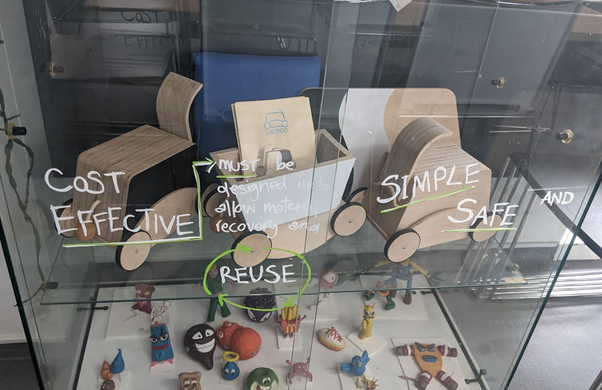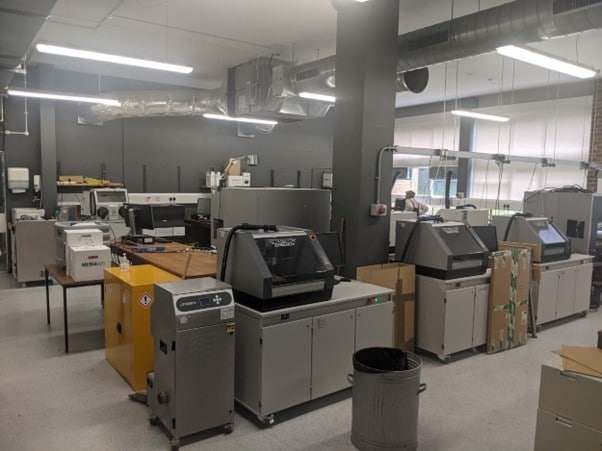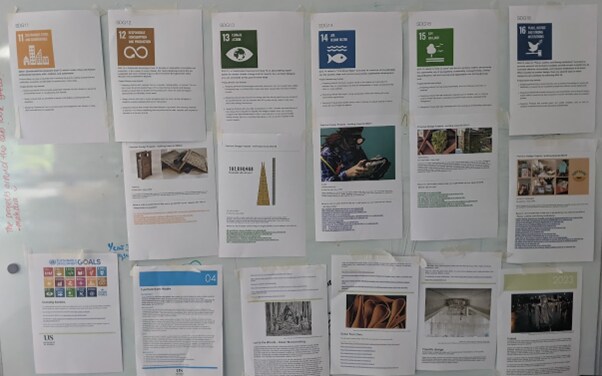The Future of Design Education - a case study with University of Sussex
Embracing Sustainability: University of Sussex's Product Design degree program is leading the way

The Future of Design Education
To imagine a future for Design and Technology qualifications in UK schools, Pearson asked industry and education leads to collaborate for a period of 3 months and create a vision for the subject. The new version of the subject had to prioritise what was important in the future, and could lead to degree, vocational or employer pathways post secondary education. The vision that came out of this work recommended many new areas of study, but one of the strongest calls was for an enhanced focus on Sustainability.
Whilst no one can argue that sustainability isn’t important and an essential part of how we should be educating our students here in the UK, the topic itself is potentially very wide in its scope. Part of the challenge of including sustainability as an addition to course content within D&T, is that adding content puts greater pressure on a subject that already has a significant breadth and depth expectation.
To understand how the study of design could adopt a greater focus on sustainability beyond current teaching and learning, we visited the University of Sussex and the Product Design course led by Claire Potter, to understand how courses are not only remaining relevant, but adopting the responsibility priorities that develop the designers for tomorrow, today.

Responsibility
Product Design degrees, when taught well, ensure that the designers they produce are able to prioritise ethical and environmentally conscious design within their practice. Sussex is a wonderful example of a course that has made commitments to this, through specific actions that influence the way its undergraduates view the world and design for it.
Whilst boasting a strong team of specialist lecturers, and a course that is hosted across teaching and learning spaces that include studios and workshops, it is the notable references to environmental course content and approach that ensure graduating students are not only ready for the world of work, but ready to accelerate climate priorities for their employers and clients.
In order to satisfy the needs and behaviours of people and society, both now and in the future, there is a distinct importance within both the BSc and BA courses on both the creation of solutions that work within the circular economy framework, but also an assurance that these products are as commercially viable as they are ethically viable.
Practical methods
A map of the globe that communicates the distance travelled from source to solution for a range of materials, is just one example of the practical and day to day conversations that trainee designers are engaged with during the course. Keeping students actively thinking about sustainable principles, whether this is by contributing to big “mapped” content displays, or sourcing materials and products to join a handling collection of examples of good and bad material choices, is important at Sussex because it ensures students are no longer passive learners about sustainability, but active in engaging in the topic in a hands on way. Sustainability is integral to the study of product design, and forms part of the shared common language of what it means to be a designer.

Systems Thinking and Regeneration
As product design students, the course trains them to tackle sustainability in ways that makes graduates more employable and sought after. Through the study of topics beyond the requirements of current D&T, graduates are trained to think in systems and about regenerative approaches.
During the development of a vision for D&T, both of these topics were notably challenging concepts that industry felt should be addressed through secondary education, but were earmarked as potentially complex and challenging prior to undergraduate level study. Their value, even as a way of understanding design, spreads across both academic and vocational pathways.
The course at Sussex ensures that these topics are a practical and applied part of the 3 year programme. Advancing beyond circular design to regenerative design, the approach that designing systems or solutions capable of mimicking the natural ecosystem by returning energy and consumables back into usable forms, is seen as the step beyond circular design, that focuses predominantly on keeping materials in the system and out of landfill. A systems approach to solving problems moves thinking beyond just a standalone product as the answer, to a much more complex context where many different aspects impact upon one another, and often designing products out of systems is better than designing new products that move only a small way towards a wider consumption issue where finite resources are running out.
It is powerful to see that at undergraduate level, Sussex is ensuring their designer students are able to think in systems, and consider not just how solutions achieve net zero targets, but net positive targets when it comes to measures like carbon.

Workshops spaces
The course continues to champion for valued-making and the fabrication of products as a distinct skill set for graduating students. In conversation with the team, it is clear that a very strong characteristic of their graduates who gain employment, is their ability to make solutions and communicate their ideas to stakeholders.
The workshops themselves are laden with a range of equipment from MDX-40 desktop routers and mills to Techsoft 2D Design driven laser cutters and 3D printers, mirroring the equipment seen in many secondary schools. The reason for these being the choice for workshops, over potentially industry suitable manufacturing equipment, is their accessibility in both the operation of the equipment and the software that controls them.
More traditional workshop spaces alongside these CAD/CAM spaces ensures that students are able to continue to study design whilst realising a passion for making, and lecturers felt positive that part of the success they have in recruitment, is attributed to the making spaces that students will have access to throughout the course.

The importance of the SDGs
Part of what brings product design to life at Sussex is the engagement in wider and real contexts. The University has displays across the department that evidence a practical engagement and analysis of the UNs Sustainable Development Goals, which featured in the design perspective series by Pearson where we explored the SDGs as potential “contextual challenges” for non-examined assessment (NEA) in future qualifications.
Engagement in the SDGs is often seen as a challenge and therefore a barrier for young people to learn, due to the goals representing 17 globally challenging and “wicked” problems (problems not easily solved with a single action or solution). However, at Sussex, through local and regional identification of the goals, the course has made SDGs an ideal starting point for design. In order to identify local issues, students explore the university campus and identify the SDGs in and around a large and beautiful site. This process not only ensures that designing can take place in a real context with real people, but also under the wider umbrella of global goals that all countries should be working towards. Students are empowered to consider how their solutions scale beyond local settings to national and global contexts.
Whilst Sussex continues to evolve its programmes for product design, the interdisciplinary approach, that will see undergraduates exploring ethics, lifecycles and emerging technologies, ensures graduates leave the course as change agents capable of implementing ethical sustainable practice in their design roles. For secondary education, design needs to recognise that degree level study evolves and adapts very quickly, and in order to prepare students for their future, greater emphasis on sustainability and human capabilities is needed in the design courses offered in our schools.
-
Find out about our vision for the future of design education here.